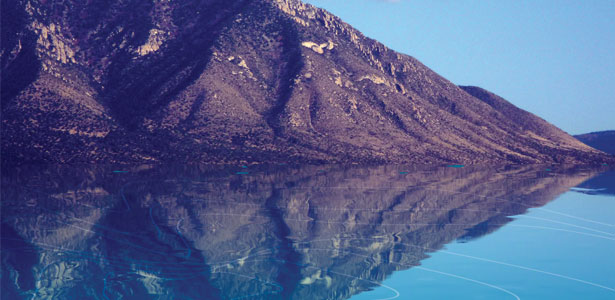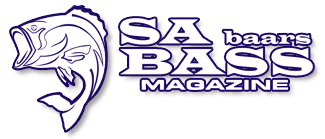
First of all I would like to make it very clear that you do not have to have a R500 000 boat with R100 000 worth of electronics to practice this highly effective technique. Many of you might already be doing it but never thought to call it contouring. Contouring is effectively pulling a lure, be it a Texas rigged plastic, Carolina rig, jig, crankbait and sometimes even surface lures behind the boat at a multitude of depths of up to more than 80ft. The reason for this technique being so effective, particularly with crankbaits, is that you are keeping your lure in the strike zone for longer, when compared to conventional cast and retrieve methods. Entry level contouring is basically following a visible contour, like a shoreline for example using your lure as your ‘depth finder’. More complex methods of contouring involve the use of topographic maps, a GPS and basic sonar. The ultimate in contouring is 60° 83kHz Broadband sonar, left and right 455kHz side scan, 800kHz DownScan directly beneath the boat, sonar logging, high definition digital Bathymetric charts, real time positioning in 3D and auto pilot.(With all that said some of you probably just had another glance at the cover of the magazine to make sure that you had a SA Bass in your hand and not the latest copy of Popular Mechanics!)
The First Basic, but effective tool in following a set depth / contour is a crankbait. This is achieved by bouncing the crank along the bottom while steering your craft from deeper to shallower water and vice versa. Contouring can be practiced at speeds from a dead crawl right up to around 6kph. If you think that 6kph is too fast for a bass, just think of Kevin Van Dam and the pace at which he cranks for bass. This technique can be compared to the white cane used by the blind, primitive but nonetheless effective. The biggest draw back to this technique is the high risk of running into unknown structure that you could get your expensive lure caught up in. This is why you really need to invest in a good crankbait knocker. A crankbait knocker is a lead object that attaches to your line and slides down to your snagged lure ultimately bouncing and knocking it free from the structure.
Crankbaits today like the Rapala DT (Dive To) range and Norman Lures DD for example are designed to dive to a set depth, hence the number that follows the DD or DT. The latest release by Rapala is the Trolls-To Series that is specifically designed for contouring with 10lb monofilament at 100ft behind the boat. Braided line like Power Pro can also be used to allow the lure to be pulled deeper and faster due to a much thinner diameter at a similar breaking strength. This braid also adds to the sensitivity thus creating a vibration of the rod tip for very slight ‘change of action’ detection.

The 3 way rig
There will come a time when you want more control over the depth, and sometimes you will want less action and speed. This is where you can use shallow running cranks or even spinnerbaits for example, and target very specific depths or contours using the 3-way swivel rig. The size of the weight will depend on the speed you wish to contour at. I like to use a 17lb fluorocarbon leader of about 6ft for the lure, and a 6-8lb mono going to the weight. This is just in case the weight gets snagged, and then it is easy to snap it off and re-tie a new weight. 
Reel with Line Counter
The reel you use will also help you become more accurate in your presentation, like the Shimano Tekota with line counter and clicker. The line counter allows you to let your lures out to very accurate distances. This becomes even more important when running more than one lure. A good drag is also important and should be set so that if you hold your rod steady, the spool is only just stopped from turning. So when you hit structure or get a very subtle bite while the rod is in a holder, you will hear the clicker indicating that the spool has moved. This will also help prevent a lot of snagging in tree branches.
The rod is very much a personal choice, but the main properties to be aware of in rod choice are too soft and too hard. Too soft and the fish will throw the lure if it breaks surface, and too hard will rip a big hole in the fish’s mouth allowing the hooks to just pop out on the slightest head shake. Remember, never strike! - your half ton boat and motor has already done this for you. Another very helpful tool is a good quality rod holder, like those by Scotty. Most anglers like to hold the rod 90% of the time, but when you do want to put the rod down to do something or if you are running more than one line, you will need a good quality rod holder. The reason I stress a good quality rod holder is because the last thing you want to do is lose an expensive rod, reel, braid and lure combo. You need to lose only one to realize this.
Fishfinder / GPS Combo
The next level of proficiency when it comes to contouring involves electronics. A basic fishfinder will allow you to monitor your depth at which your lure starts to hit the bottom. It is a good idea to remember the unique diving depths of each lure. I use a scribe and etch the depth onto the bill of the crankbait. Two identical lures made by the same manufacturer can sometimes run at different depths of up to 3ft on the same line, speed and distance behind the boat.
This fishfinder will also warn you of structure your lure is approaching thus giving you a chance to turn, slow down and bump the tree, or lift your rod hoping to skim over the top of it. With time and practice you will learn exactly at what point your lure will hit the structure. The next level in improving your proficiency in contouring is to learn the ‘lay of the land’; in other words, the topography of that specific body of water. I often get asked what the difference is between topography and bathymetry. Well, topography is the study of the Earth’s surface, and bathymetry is the study of the Earth’s oceans, lakes and dam depths. Knowing where the humps, ledges and river channels are, you can now plan a route without zig-zagging all over the place going in and out of the strike zone. This is your underwater map as it were.

Old Sediment Map
The most accessible and affordable maps available to us anglers are either the sediment maps themselves available from the Department of Water Affairs and Forestry, or a digital version of these maps such as those seen on the Internet. Creating accurate data from these maps can sometimes be a challenge due to the way that the maps were created in the first place. In other words, a lot of ‘averaging’ took place, but these maps should put you on to a lot of new areas you might not have thought to fish before.


 Visit us our
Visit us our